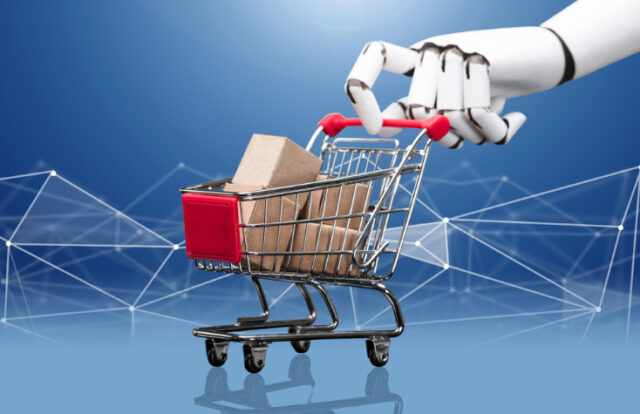Personalization in e-commerce is no longer a luxury; it’s a necessity for businesses looking to enhance customer experiences, increase engagement, and drive sales. By leveraging AI and machine learning, e-commerce platforms can tailor their offerings to meet the individual needs and preferences of their customers. Here’s how to effectively personalize your e-commerce site using these advanced technologies.

Table of Contents
Toggle1. Understand Your Customer Data
Collect Relevant Data
Before you can personalize experiences, you need to gather data on your customers. This includes:
- Behavioral Data: Track customer interactions on your site, including pages visited, products viewed, and items added to the cart.
- Demographic Information: Gather data such as age, gender, location, and preferences through account creation or surveys.
- Purchase History: Analyze past purchases to identify trends and preferences.
Utilize Analytics Tools
Implement analytics tools to help collect and analyze this data effectively. Tools like Google Analytics, Shopify Analytics, or more specialized platforms can provide valuable insights into customer behavior.
2. Implement Recommendation Engines
Product Recommendations
AI-driven recommendation engines analyze customer data to suggest products based on individual preferences and behaviors. Key types include:
- Collaborative Filtering: This method recommends products based on similar customer behavior. For example, if customers A and B have similar shopping patterns, items purchased by A can be suggested to B.
- Content-Based Filtering: This approach recommends items similar to those a customer has previously purchased or shown interest in, using product attributes such as category, color, or brand.
Personalized Search Results
Enhance search functionality by integrating AI to provide personalized search results. This can be achieved through:
- Search Autocomplete: Suggest relevant products based on user input and previous searches.
- Search Ranking Adjustments: Tailor search results based on user behavior, ensuring that the most relevant items appear first.
3. Tailor Content and Messaging
Dynamic Landing Pages
Create dynamic landing pages that change based on customer segments. For example:
- Segmented Promotions: Display personalized promotions based on a customer’s previous purchases or browsing history.
- Tailored Messaging: Use customer data to craft specific messages that resonate with different audience segments, increasing the relevance of your content.
Email Personalization
Leverage machine learning algorithms to analyze customer behavior and send personalized email campaigns. Techniques include:
- Product Recommendations: Include tailored product suggestions based on past purchases or browsing behavior in email communications.
- Abandoned Cart Reminders: Use AI to trigger personalized reminders for items left in the cart, possibly including incentives to encourage purchase.
4. Enhance Customer Support with AI
Chatbots and Virtual Assistants
Implement AI-powered chatbots on your e-commerce site to offer personalized assistance. Benefits include:
- 24/7 Availability: Chatbots can handle inquiries at any time, providing instant responses to common questions.
- Personalized Recommendations: They can suggest products based on customer queries or past purchases, enhancing the shopping experience.
Predictive Customer Service
Use machine learning to predict customer issues based on behavior patterns. For example, if a customer frequently abandons carts, proactive measures can be taken to reach out and provide assistance.
5. Optimize the Shopping Experience
Personalized User Interfaces
Adjust the user interface based on customer preferences. For instance:
- Customized Dashboards: Offer personalized dashboards that display relevant products, discounts, and recommendations based on the user’s past behavior.
- Adaptive Design: Modify layout and product placements based on user interactions, ensuring a tailored experience.
Location-Based Personalization
Utilize geolocation technology to personalize content based on a user’s location. This can include:
- Local Promotions: Display offers specific to the customer’s region or city.
- Store Availability: Inform customers of nearby store locations and the availability of products for quick pickup.
6. Continuously Analyze and Improve
A/B Testing
Conduct A/B testing to determine which personalization strategies yield the best results. Test variations in:
- Product Recommendations: Assess different recommendation algorithms to see which drives more sales.
- Email Campaigns: Experiment with personalized messaging and promotions to identify what resonates with customers.
Feedback Loops
Create feedback mechanisms to understand how effective your personalization efforts are. Solicit customer feedback through surveys or direct interactions to continuously refine your approach.
Conclusion
Personalizing e-commerce sites with AI and machine learning is essential for creating a competitive advantage in today’s market. By leveraging data analytics, recommendation engines, tailored content, AI-driven customer support, and continuous optimization, businesses can enhance the shopping experience and foster customer loyalty. As technology evolves, staying ahead of the personalization curve will be key to driving growth and success in the e-commerce landscape.


No responses yet